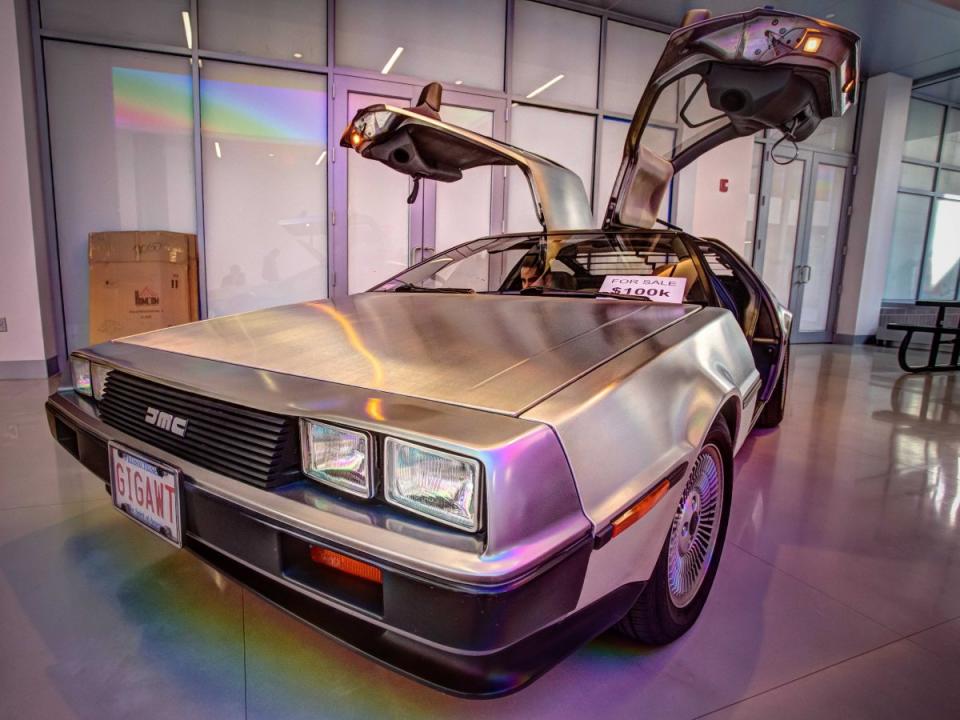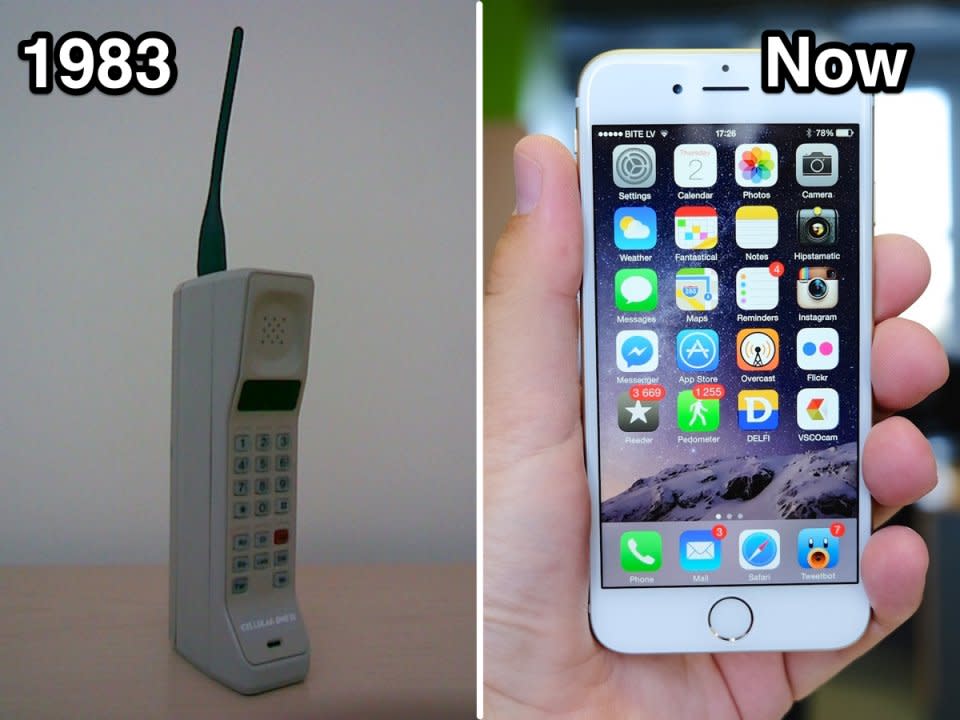What’s cool in tech has changed drastically from the 1980s to today


rjshade/flickr
The Delorean DMC-12 was a symbol of the future.
From smart phones to laptops, technology is at the center of much of modern life and culture.
The 1980s were huge in terms of consumer electronics and innovation, as many early versions of important technologies were released then.
Some of the early breakthroughs can spark a wave of nostalgia, while others are not missed; they can’t compare to what we have today.
We’re looking back on some of our favorites to witness the evolution and see just how far we’ve come.
Atari’s Touch Tablet debuted in 1984. Retailing for around $89, the software would allow users to draw shapes and lines. Today, the iPad Air 2 starts around $500 and can be customized with hundreds of different apps.

The DeLorean DMC-12, which has gull-wing doors and an innovative fiberglass body, became a symbol for futuristic transportation after being turned into a time machine in “Back to the Future.” Today’s Tesla Model S is a fully electric luxury sedan and, for many, a symbol of the future of electric cars.

In the ’80s, camcorders were huge and heavy, and you needed to store everything on tapes. Today’s cameras are lightweight and versatile, and can fit in the palm of your hand. And they are digital — no wasted tape, much easier editing.

The first cell phones to be sold commercially were a series of phones called the DynaTac, made by Motorola in 1984. (Remember that crazy one Gordon Gekko used in the beach scene in “Wall Street”?) The first phones were absolutely huge compared to today’s 4.7-inch iPhone 6.

In the ’80s, Puma’s RS Computer Shoes used a set of microprocessors and an inertia switch that could track runners’ speed and distance. Today, there are a bunch of different fitness trackers you can use to monitor your exercise. The Jawbone Up24, for example, can track your steps, calories, and hours of sleep.

It’s gotten easier to watch movies, too. In the ’80s, you would play VHS tapes on your VCR — usually after a trip to Blockbuster. In 2015, you can stream movies using a smart TV, Google Chromecast, Amazon Fire TV stick, or Apple TV, all from the comfort of your couch.

In the ’80s, you would listen to music on your Sony Walkman, and probably carried around a big box of cassette tapes. Now we can either play songs from our digital music library, or stream literally millions of songs on an iPhone or iPod.

But if you wanted to share music with friends or at a party, you’d use a boombox like this one from Lasonic. Today, there are lots of wireless speakers, like the Amazon Echo, which can also respond to voice commands.

The Compaq SLT/286, launched in 1988, was 8.5 inches deep and weighed 14 pounds. The new MacBook is only 13.1 millimeters thick and weighs just 2 pounds.

The Casio C-80 Calculator Watch, which came out in 1980, would allow you to solve complicated math problems right on your wrist. The Apple Watch will obviously be able to do much more than that.

In the ’80s, you might play 8-bit video games on your Nintendo Entertainment System. Today, the Xbox One is one of the most popular video game systems, and features internet connectivity, motion sensor technology, and hi-definition graphics.

Video game graphics, in particular, have improved exponentially. Here, compare the visuals for a classic game of Frogger versus the graphics for “Destiny” on Playstation 4.

Throughout the ’80s and ’90s, people used floppy disks to save information and install programs. Today people back their data up to the cloud.

Thirty years ago, bulky CRT televisions were the norm. Today’s consumers covet ultra-HD TVs, like Samsung’s curved 4K model, which shows content at 4x the revolution of standard hi-def TVs.

Though they were a huge breakthrough for consumer computing, mouses used to be square, bulky, and ugly. Apple’s modern Magic Mouse can scroll in any direction, and it’s wireless.

A Polaroid camera was a fun party accessory, allowing you to print photos of you and your friends right away. The modern day equivalent is Instagram, an app that lets users snap and edit photos, and share them instantly with friends all over.

Speaking of modern …

Take a tour of the Winklevoss twins’ stunning Los Angeles mansion, which you can rent for $150,000 a month >
The post What’s cool in tech has changed drastically from the 1980s to today appeared first on Business Insider.

 Yahoo Finance
Yahoo Finance 
